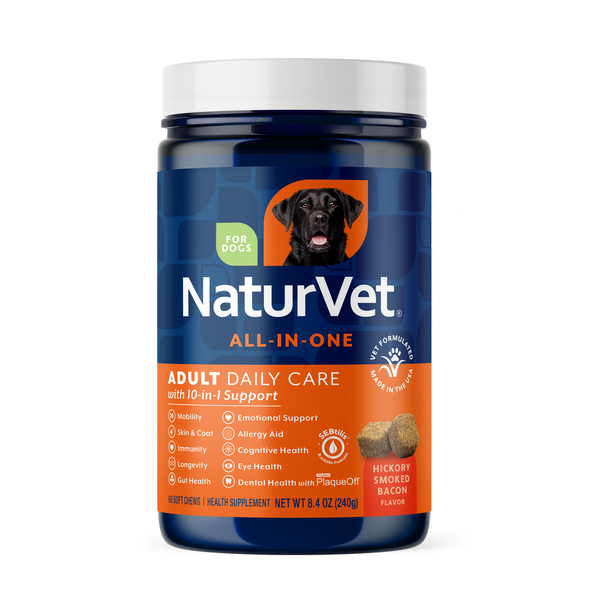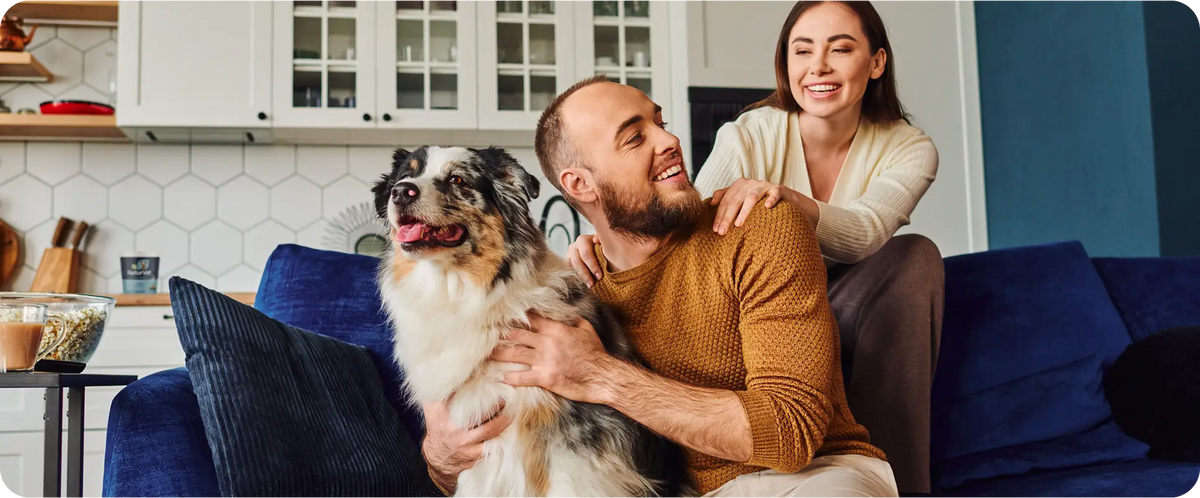5 Highly Successful Health Tips for Basic Pet Care
We love our pets. And there’s nothing better than seeing our pups and kitties happy, healthy, and being themselves. But keeping them fed properly, frollicking, and free from illness isn’t always easy, and takes some know-how. In this article, we’re going to cover 5 big categories in preventative health that are important to be thinking about on a daily basis for your pet.
These categories of basic pet care may either ease your mind by saying “Hey, I already do that!” Or you may find yourself saying “Uh oh, I didn’t actually realize that.” Either way, the goal is to keep you thinking always about preventative health care, which is often the simplest, least expensive, and most practical way to give our furry companions happy and healthy lives.
1. Watch the Weight
We hear a lot on the radio, television, or other media about obesity in America, especially childhood obesity. But obesity in pets is just as prevalent and carries with it many health concerns.
According to the Association for Pet Obesity Prevention’s 2017 statistics, 57% of dogs and 60% of cats in America are overweight or obese and these numbers actually increased by 1-2% since 2016. Many pets develop weight problems at an early age. Because having excess fat deposition is generally pro-inflammatory, there are several health disorders that can be compounded by obesity.
Joints are the big one. Overweight dogs and cats always have earlier signs of hip, elbow, and knee joint arthritis and weight loss is a crucial component of assisting with joint health. Obese cats are also predisposed to diabetes (kind of like human Type II diabetics). Being overweight in general also puts more strain on the heart and lungs, can lead to grooming issues like dandruff, hair matting, and dermatitis inside the extra skin folds.
How do you know if your pet is overweight? The basic place to start is by looking at the area just behind her ribs. From the top, there should be a gentle dip inwards from the last rib to the hips. When looking at her from the side, her belly should slope gently upwards from the last rib to the groin. If your pup or kitty loses this “Coke bottle” shape, appears very flat from the last rib back and has no belly tuck at all, she is crossing the line to being overweight.
I am asked regularly by pup parents if their pooch is overweight, but I feel this question is asked less often by kitty parents. It may seem silly to think about, but a housecat should have a body condition similar to any wild cat like a lion or tiger you see on Animal Planet. These animals are lean and agile. Even “big” housecats should appear this way.
Why are so many pets overweight? The most likely reason is the most simple: food. Many folks equate feeding their dog or cat to feeding affection. However, the reality is that many pets, as intelligent as they are, learn to beg because they know they can get more food with enough practice. I think cats are especially sneaky about this. While extra food makes for short term happiness, the additional weight gain in the long run causes more harm than refusing that extra half cup of food or leftovers from dinner.
Does this mean you can’t give your pup or kitty treats? Of course you can! With help from your vet, you can determine how much food per day is appropriate for your pet, and use a small portion of that amount for treat allowance. If you want to provide a separate treat, make sure it amounts to no more than 5-10% of your friend’s daily diet.
What kind of diet should you be feeding? We’ll get to that in just a minute.

2. Those Pearly Whites
The importance of dental care can’t be overstated. In humans and in pets, oral health is connected to health in the rest of the body. This includes, among other body systems, healthy kidneys and a healthy heart.
But while it’s common for people to brush their own teeth at least twice a day, oral healthcare for pets at home frequently falls short. While getting a puppy to sit, stay, potty train, and behave on a leash are all common training goals, training a pup to tolerate having his teeth brushed isn’t commonly considered.
Many folks have anxiety over putting their pet under anesthesia for a dental cleaning procedure, and this is understandable. But the reality is that oral health is so important for so many reasons, that if we can’t accomplish this care at home in a preventative manner, we’ll have to turn to dental cleanings.
Thus, it makes sense to focus on teeth brushing at home from a young age, during a puppy’s training for other behaviors. Setting a goal of brushing 2-3 times per week is an important one and can go a long way towards improving overall health, as well as reducing the number of dental cleanings your pup or kitty may need during their lifetime.
It’s important to use a toothpaste formulated for pets and to accompany it with an appropriate toothbrush. A toddler toothbrush can work well, but small brushes that slip over your finger, as well as dental wipes, are also commonly available.
Start out just with getting your pup or kitty used to the idea with some toothpaste on your finger for the first few times and just maybe doing one side of the mouth or just the top or bottom Gradually introduce a brush and increase your coverage until the whole mouth is involved.
If acclimating your friend to brushing seems impossible, there are also dental treats and oral water additives to consider. These don’t work as well on their own compared to brushing, but they at least help. Check out the list of approved dental treats provided by the Veterinary Oral Health Council, as these treats have been proven to reduce tartar and plaque.

3. What Goes In...
Discussions about diet go hand-in-hand with discussions about weight. There are so many diet choices out there and so many opinions about what to feed, that many pet owners feel overwhelmed.
Essentially, the most important thing is to feed your pet a well-balanced diet. Commercial diets are formulated to be well-balanced, but not all of them are created equal. Generally, I tell folks to look for diets with meat as a top ingredient and to look at a company’s recall history. The Association of American Feed Control Officials (AAFCO) establishes protocols for feeding trials, which help support quality and safety. Diets that meet these standards will have the AAFCO statement printed on the packaging.
Are home-cooked diets okay? This depends. Because it’s very easy to misformulate a diet and either leave out nutrients, or include them in the wrong proportions, it’s best to consult with your veterinarian or a veterinary nutritionist if you’d like to cook for your pet. This is especially true for cats. Cat are true carnivores, meaning they need certain nutrients from red meat in their diets to survive, while dogs are technically omnivorous. It’s very easy to make poor assumptions about what a cat should be eating and in what amounts. So much so that unless a kitty owner is willing to see a nutritionist to have a diet formulated, I generally discourage home-cooking for cats.
Grain-free and raw diets are popular nowadays and also evoke many questions at the office. From a strictly medical perspective, there is limited data to support either type of diet. It is true that dogs can have a wheat gluten allergy, similar to people with Celiac’s disease, but other proteins like chicken and beef are more often an underlying food allergy cause.
There are newer concerns about grain-free diets being connected with a type of heart disease called dilated cardiomyopathy (DCM). While grain-free diets high in legumes and potatoes seem over-represented in some of these atypical DCM cases, this is not true for every case and no cause and effect link has yet been established. Cardiologists, veterinary nutritionists, and the FDA continue to work to find out more. Until then, discuss with your vet if your pet is actually benefitting from a grain free diet, or if a different diet type might be more suitable.
Raw diets sound appealing and generate images in our mind’s eye of our kitty catching wild salmon from a mountain stream or our pup bounding through the snow in search of prey. But unfortunately, true raw diets made at home can be lacking in nutritional balance and also present a significant public health risk to humans who are handling raw chicken, beef, or fish on a regular basis without cooking it.
Supplements are also very popular, but speak to your veterinarian first. Many diets already have nutrients in appropriate amounts that should not be over-supplemented, (like Calcium for growing puppies). Thus, supplementing is not appropriate in every case. Several conditions, like allergic dermatitis, arthritis, chronic digestive issues, anxiety, and sleep disorders, may benefit from supplementation.
If you are seeking out a supplement to start, look for the National Animal Supplement Council seal. There are many supplement manufacturers out there but the NASC has stringent labeling guidelines and subjects member companies to random product testing to ensure quality.
4. Keep Your Eye to the Ground (or the Floor) (or the Kitchen Counter)
If I asked you the most common reason pets are brought in to the vet clinic, what would you guess? Well, we’ll just cut to the chase. It’s digestive upset.
Seeing pets for vomiting and diarrhea, especially pups, is one of the most common presenting concerns. And the most common cause? While we don’t truly find out in many cases, and there are countless potential causes, dietary indiscretion is at the top of the list.
From underwear to socks, from left-out leftovers to toddler floor-throwings, and from sticks to other pet’s poop, there is almost no limit to what our furry companions may find appetizing.
The best defense is entirely preventative. Keeping the floor clean of socks, underwear, hair-ties, or any other undigestible items your pet has a hankering for is the only way to eliminate any chances of ingestion. And likewise, keep the kitchen clean of any left-out food. For pets who have their noses in the trash, getting a can with a lockable lid virtually eliminates the possibility of the can getting knocked over and spilled all over the floor.
When I’m outside, I enjoy watching dogs happily trotting alongside their human companions. But what I also notice is that many pup parents are on their phones or are otherwise distracted during walks, and are not paying attention to what their pups are getting their noses into. Whenever a pet owner insists that their dog or cat didn’t eat anything that could cause digestive upset, I always think about what I observe daily and wonder just how they can be sure.
So be as sure as possible, and always keep a close eye on your pets--indoors and out.
5. Develop a Relationship with a Trusted Veterinarian
You know your dog or cat. They’re family members after all. However, a veterinarian knows “dogs” and “cats” and sees many of both every day, so having a good working relationship with a pet doc is very important.
Your vet is going to be your ultimate expert on preventative healthcare, well beyond the limited scope of our article here, or any other article for that matter. Your vet will come to know your pet personally, which beats any kind of generic advice you come across.
Just like you should see a physician on a regular basis to safeguard your own health, and take your kids to their pediatrician, your pup or kitty should see a vet on at least an annual basis.
Develop a comfort level with a vet who is willing to fully discuss your concerns and to help you understand your pet’s current state of health. This includes discussing vaccinations most appropriate to your region and level of risk, annual diagnostic testing, preventative medications, and diet. If finances are a concern (and for most folks they are to some degree) also make sure your vet practice is willing to make and discuss estimates with you so that you can have some idea of what to expect.
Lastly, animals and medicine can both be unpredictable. Keeping an open mind and staying flexible is important for maintaining appropriate expectations. Develop a relationship with a vet who is comfortable discussing all aspects of care with you. This includes if a plan for treatment needs adjustment or if a medical condition becomes complicated and referral to a specialist would be appropriate. Many vets have working relationships with specialist doctors in their area and will remain a part of your pet’s care even if referral is needed.
It’s true, your vet may find something you were unaware of, like a skin growth or fractured tooth, at an annual visit. And it’s true this can translate into an unexpected cost. But that’s why it’s important to build a relationship with a vet who you know cares about your pup or kitty and the relationship you share with your furry friend.
A good vet will always make time to discuss/demonstrate exam findings thoroughly with you, explain why they’re important to address, and provide a couple of options for how to proceed, including possible costs. After all, catching things early is part of what preventive care is all about! Early detection results in less discomfort for your companion and lower expense for you.

Just a Little Prevention Goes a Long Way
There are many aspects to preventative health and basic pet care. Not all of them can be covered here. But these five tips can hopefully get you started. Your veterinarian is going to be the best resource to discuss all aspects of preventative healthcare with you. But even after thorough discussion, it’s still up to you to enact a plan at home. And it’s worth it. After all, an ounce of prevention is worth a pound of cure, as they say.
But even though preventative health is important, don’t forget to relax and enjoy your furry companion, and to do so often. Remember, you can’t control everything. At the core of the human-animal bond is that indescribable connection we feel when we’re together. It’s just as important to nurture that connection.























